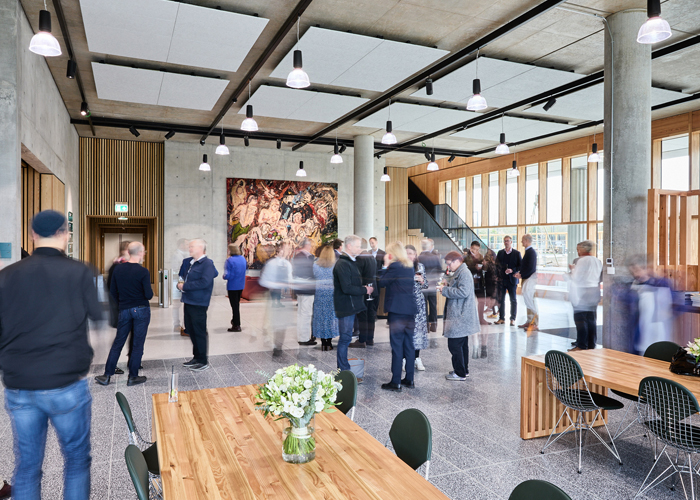THE headline Scotland Business Activity Index – a seasonally adjusted index that measures the month-on-month change in the combined output of the region’s manufacturing and service sectors – signalled a third consecutive monthly expansion in private sector output during March. The index rose from 52.1 in February to 53.6, indicating the most pronounced expansion in 11 months. The latest upturn across Scotland surpassed that seen for the UK as a whole, with only London and Northern Ireland recording stronger rates of growth.
However, underlying data noted a continued divergence between the two sub-sectors. While business activity rose across service providers at the sharpest pace since June 2022, the downturn in manufacturing production entered its ninth successive month and deepened since February.
Scotland’s private sector signalled a second consecutive monthly rise in new business during March. This was again driven by service firms, according to sub-sector data, while the downturn in manufacturing new orders entered its twelfth successive month. Survey respondents noted that new client wins and contracts, increased marketing and the closure of competitive firms supported the latest uptick.
The rate of growth across Scotland moderated and lagged behind the UK-wide average, however.
Latest data indicated a further improvement in confidence levels at Scottish private sector companies. The respective index ticked up for the second straight month to a 13-month high. The positive year-ahead outlook was spurred by plans of increased investment and advertising, as well as hopes of improving underlying demand conditions.
Nonetheless, sentiment across Scotland was the second-weakest of all the monitored UK regions and nations, with only the North East anticipating softer growth in activity.
The seasonally adjusted Employment Index was above the 50.0 neutral mark for the fourteenth month running in March, pointing to a rise in employment at Scottish firms. Where staffing levels were raised, anecdotal evidence pointed to growing business requirements and the successful replacements of leavers. That said, the rate of job creation was among the weakest in the aforementioned sequence, amid a softer rise in services employment and a fresh and solid decline at manufacturers.
Despite the slowdown in hiring activity across Scotland, the rate of growth managed to outpace that seen at the UK level.
Outstanding work across Scotland’s private sector fell in March, with a drop now recorded in 21 of the last 22 survey periods. That said, the rate of decrease was the weakest in nine months and fractional overall, as a solid and stronger rise in outstanding business at service firms was able to largely offset the contraction seen at manufacturers. Manufacturers often noted that fewer orders and material shortages drove the latest downturn.
Similarly, the UK registered a softer decrease in outstanding business during March. However, the rate of contraction exceeded that observed for Scotland for the third successive month.
Cost burdens rose across Scotland during March. The rate of inflation, despite easing to a three-month low, was steep overall. Higher prices from suppliers, in part linked to the Red Sea crisis, and rising energy, material and labour costs were attributed to the latest rise in cost burdens.
However, the rate of input price inflation across Scotland was one of the weakest of the 12-monitored UK regions and nations. Wales was the only area to record a softer rise in input prices.
Scottish private sector firms raised their selling prices in March. According to panellists, output charges were increased as a result of higher input costs. However, the rate of output price inflation moderated notably to the weakest in just over three years and was modest overall.
Moreover, Scotland recorded the softest rise in charges of the 12 monitored UK regions and nations.
Judith Cruickshank, Chair, Scotland Board, Royal Bank of Scotland, commented:
“The health of the Scottish private sector continued to improve as the first quarter drew to a close. However, the growth recorded was solely garnered on the back of the fast-expanding service sector. Meanwhile, the production segment of the economy remained a challenge. The lopsided nature of the expansion injects some concern over future growth. Divergent trends were also seen in terms of employment, which increased in services but decreased solidly across manufacturing.”











